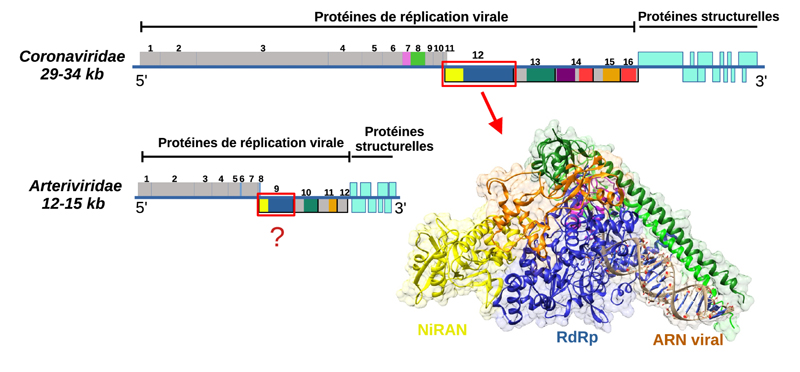Ashleigh ShannonScientist
Architecture et fonction des macromolécules biologiques (AFMB)1
NidoRep (Horizon Europe - ERC StG 101162788)
Nidovirus replication complexes: How enzymes shape viral genomes
Nidoviruses are an intriguing group of +RNA viruses, whose diverse genome sizes (11-41 kb) reflect a long history of adaptation to suit specific niches. They remain mostly neglected, with the exception of the large-genome Coronaviridae (CoV) family (32 kb), which includes the notorious human pathogen SARS-CoV-2. At the other end of the size-spectrum is the small-genome Arteriviridae (ArV) family (11 kb), an understudied group of prevalent, animal-infecting pathogens. Viral replication is mediated by a suite of enzymes known as the replication transcription complex (RTC), at the core of which is the RNA-dependent RNA polymerase (RdRp) and its unique N−terminal domain, known as the NiRAN. NidoRep aims to bridge the prevalent knowledge-gap between small and large genome nidoviruses, by deciphering the specific structural and mechanistic features of the RTC that regulate genome replication across such vastly different viruses. It will be divided into three distinct objectives: Objective 1 will focus on small-genome nidoviruses, providing the first structural and functional characterization of an ArV RTC. Objective 2 will probe how RdRp speed and fidelity have been fine-tuned to accommodate the distinct and conflicting replication requirements of diverse nidoviruses. This will be achieved through the development of an innovative in vitro sequencing assay, also providing a new and robust tool for screening drugs that corrupt RNA synthesis. Objective 3 will investigate the role of the NiRAN in initiation of RNA synthesis though proteinpriming, providing new insight into the functional evolution of this complex domain, while also identifying novel drug-targeting sites.
NidoRep will determine how specific viral enzymes have structurally and functionally evolved to support remarkable genome diversification within a single viral order. It will expand our understanding of understudied viruses with epidemic potential, and guide drug design strategies against key viral targets.

- 1Aix-Marseille Université/CNRS
